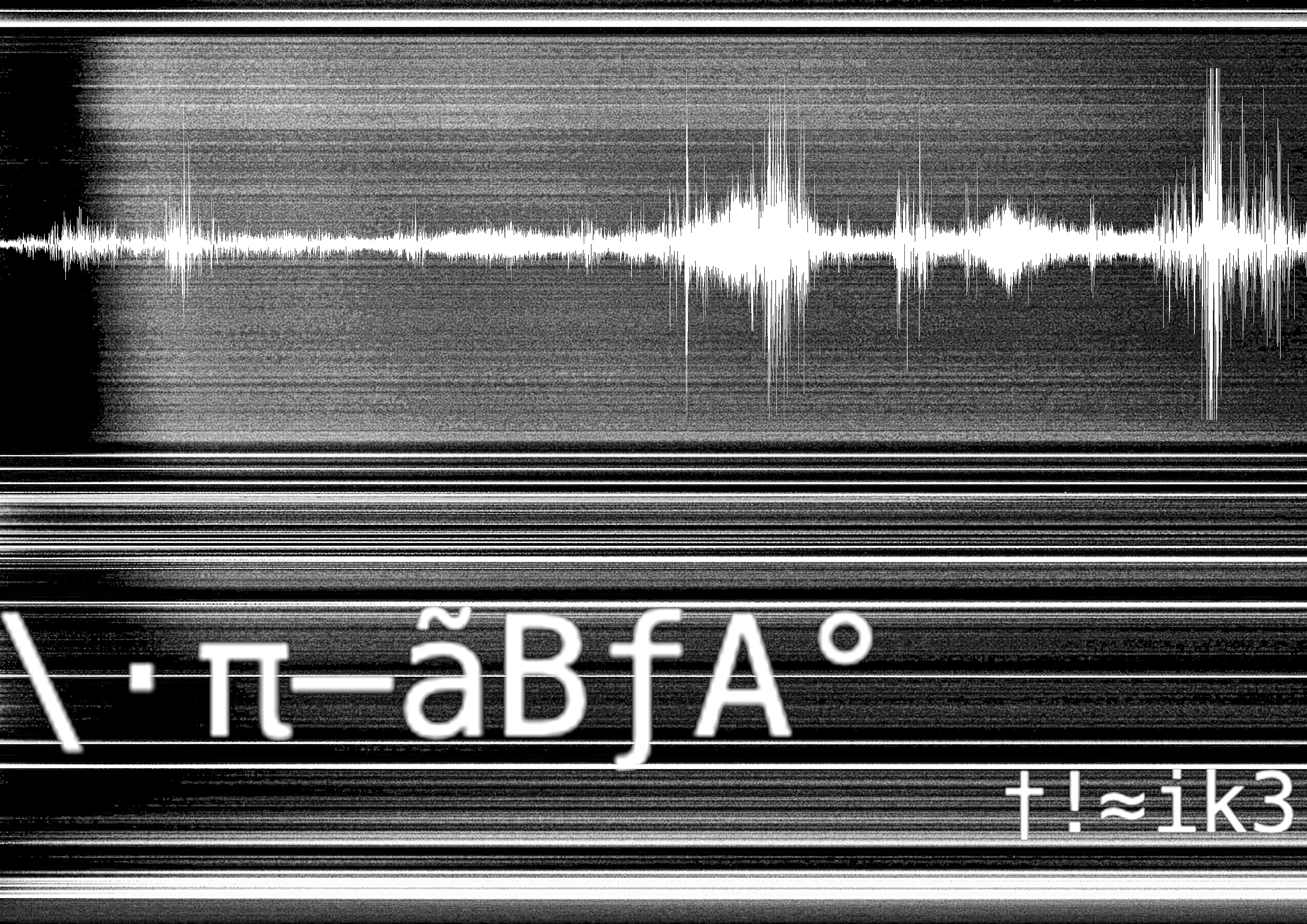
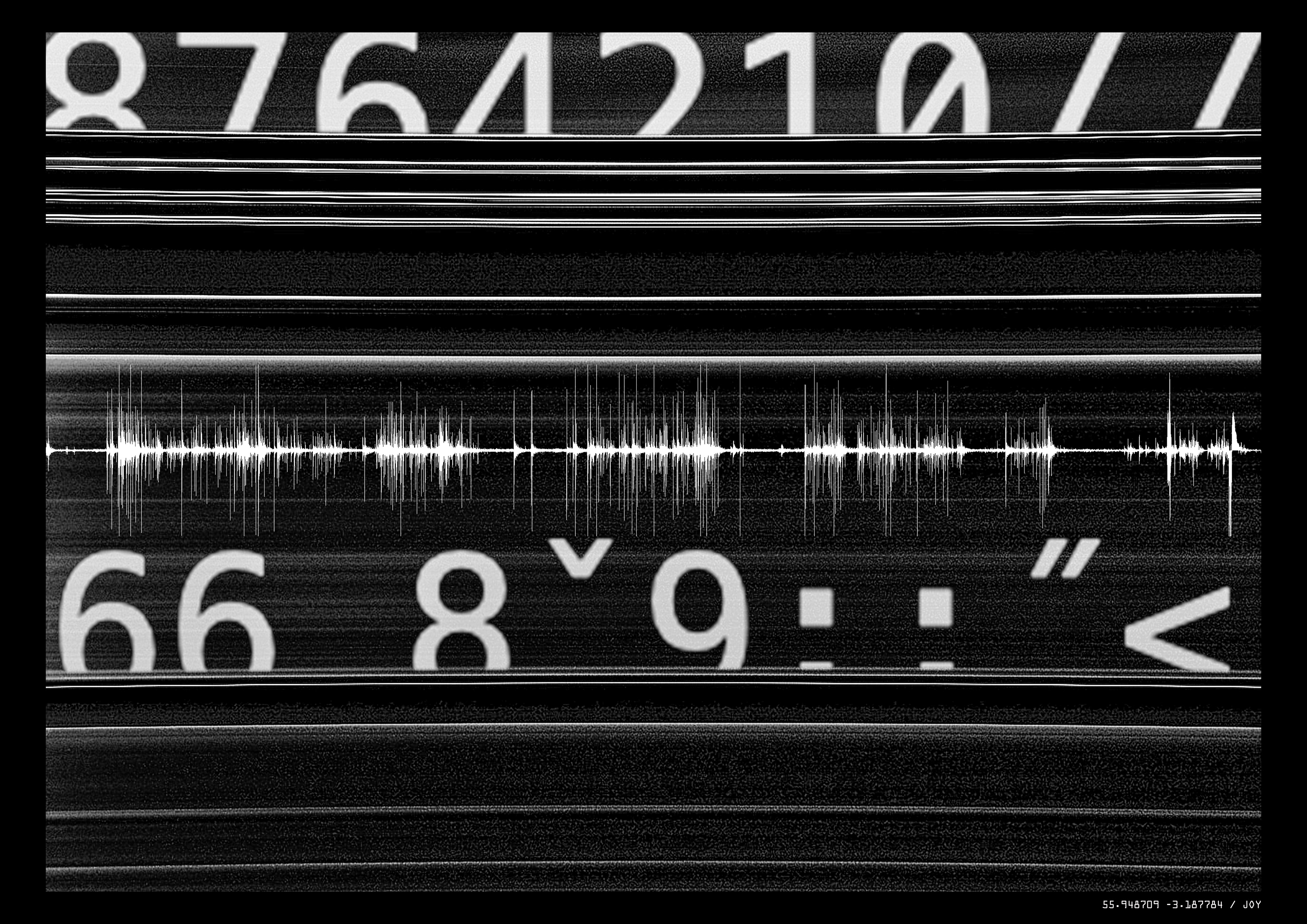
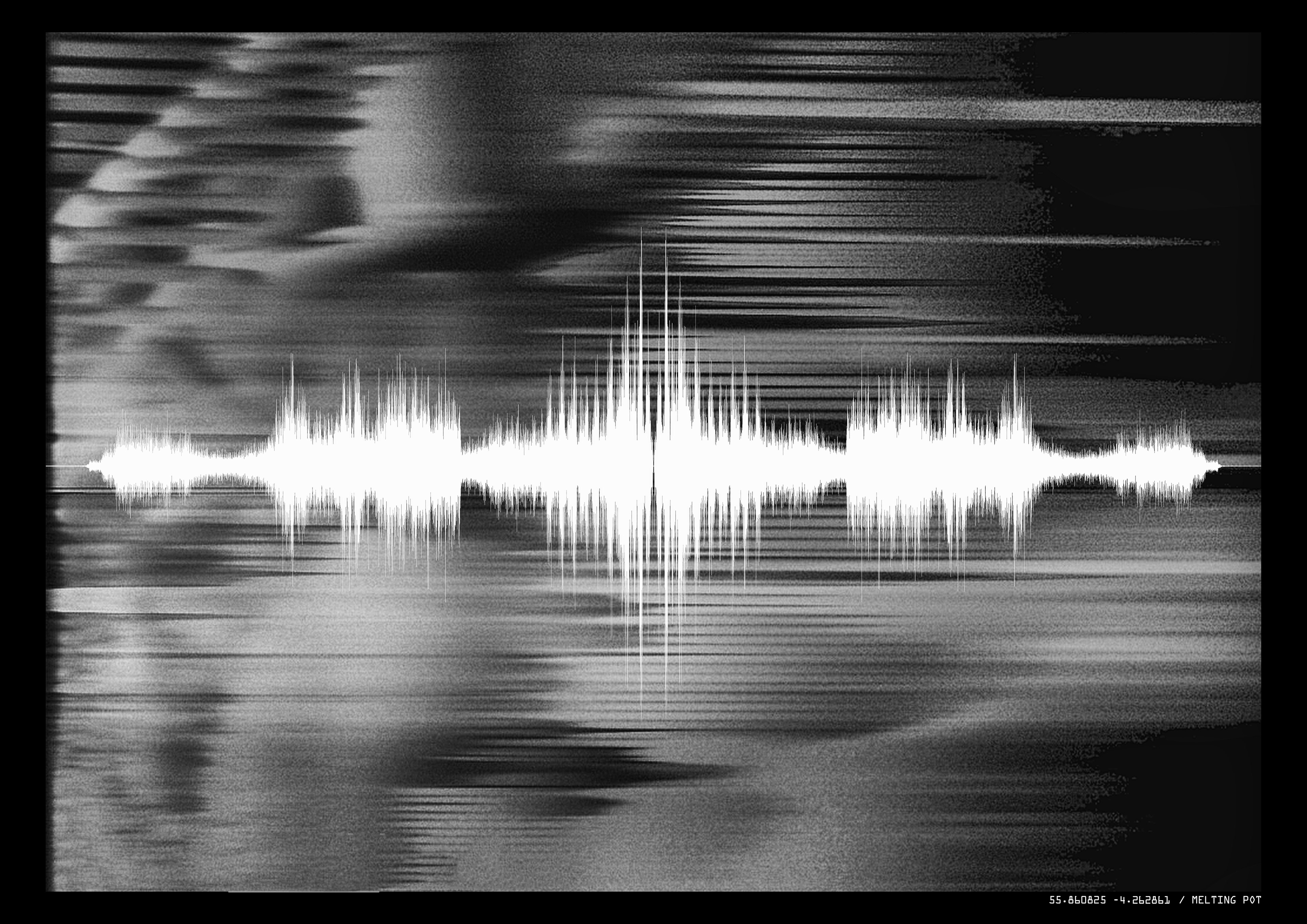
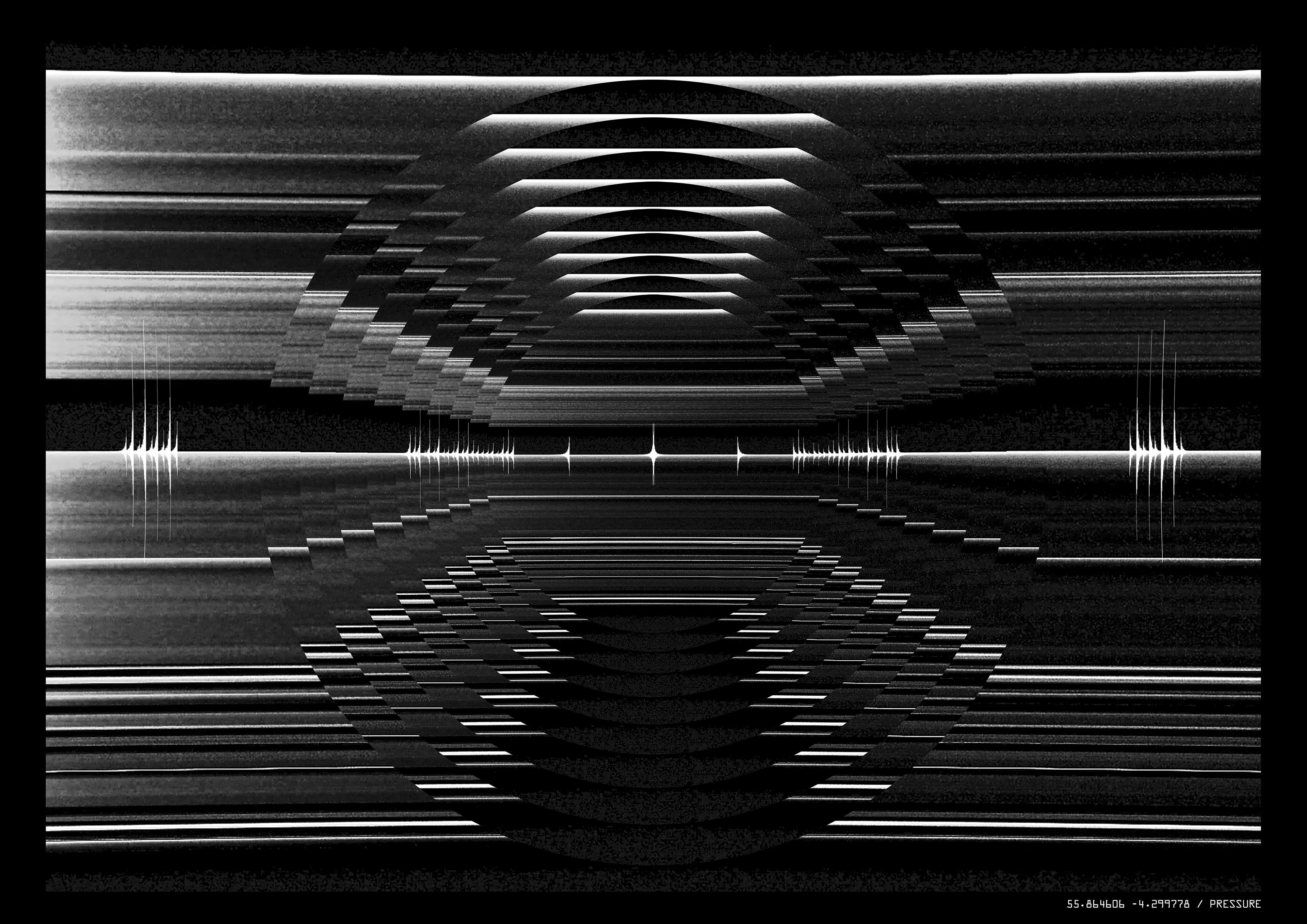
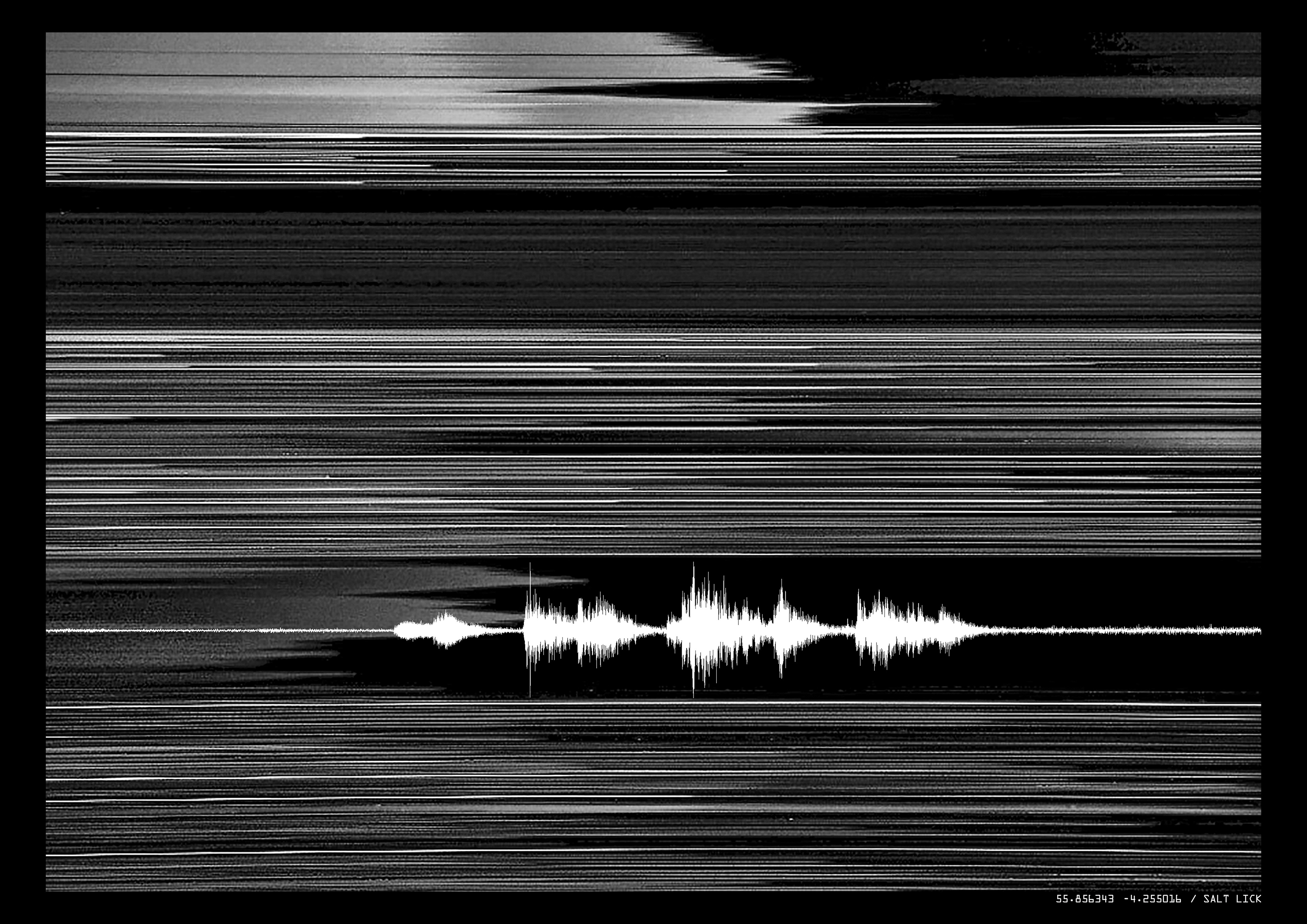
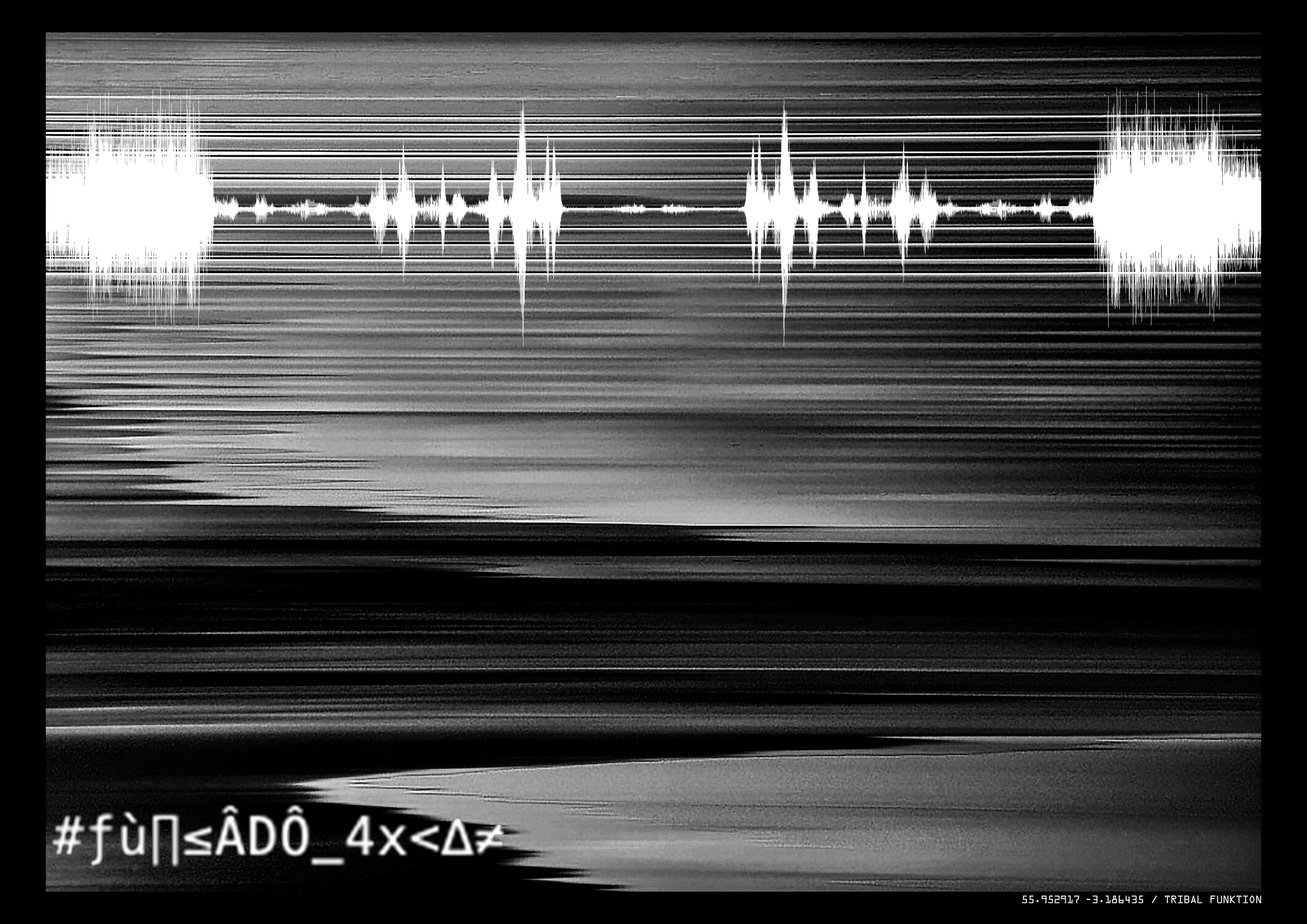
Signal to Noise examines the afterlives of cultural space through interference and failure. Recorded at the sites of former nightclubs, the work registers the traces of environments once animated by collective energy and nocturnal ritual. Images captured on a camera with a broken sensor arrive already fractured, their corrupted surfaces embodying collapse at the instant of inscription. Malfunction ceases to be error and instead becomes a language of representation, a visual analogue for spaces that no longer hold their former intensity.
Alongside these images, ambient recordings are reconfigured into visual forms and folded back into the photographs, collapsing auditory and visual registers into unstable palimpsests. What is heard returns as what is seen, a spectral overlay that suggests presence while refusing clarity. Each frame is inscribed with GPS co-ordinates, an act of documentary anchoring that only underscores instability: an attempt to fix memory in place while revealing its continual drift.
The title signals the central concern of the work. Communication is never pure; every act of transmission is shadowed by distortion. Signal cannot be disentangled from noise, just as memory cannot be separated from revision, fracture, and loss. In Signal to Noise, this instability is not a flaw but the organising principle. The corrupted image, the fractured sound, and the mapped co-ordinates converge as allegories of memory itself, where clarity dissolves into interference and every trace is already compromised.
Ultimately, the work is less a document of vanished places than a séance for them. It stages an act of summoning through technological failure, where malfunction becomes presence and disappearance persists not as absence but as signal refracted through noise.